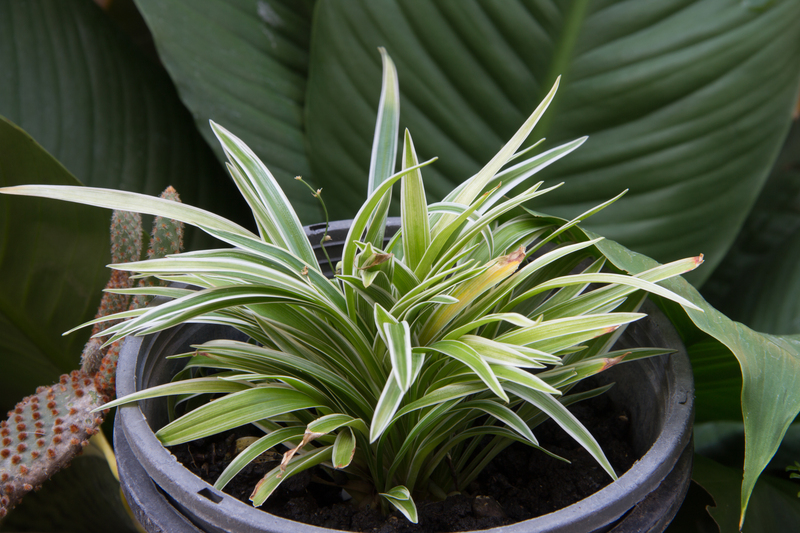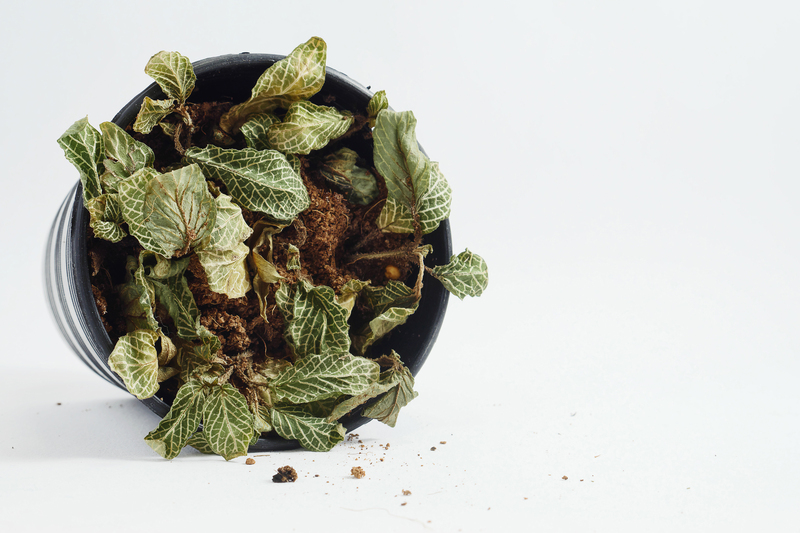Embrace Expert Orchid Care for Lush Blooms
Posted on 14/08/2025
Embrace Expert Orchid Care for Lush Blooms
If you aspire to transform your home into a vibrant oasis with stunning orchid blooms, mastering the art of expert orchid care is the key to success. Orchids, with their elegant blossoms and graceful foliage, can thrive indoors and reward you with lush, lasting flowers. This comprehensive orchid care guide will illuminate the essential techniques and insider tips that set seasoned growers apart. Whether you're a beginner with your first Phalaenopsis or an enthusiast collecting rare Cattleya species, read on to learn how to nurture orchids for beautiful blooms year-round.

Understanding Orchid Essentials
Why Orchids Are Unique Among Houseplants
Orchids belong to one of the largest families in the plant kingdom, boasting extraordinary variety and adaptability. Unlike many common houseplants, they possess specialized roots, unique growth habits, and specific environmental needs. This makes expert care for orchids both a rewarding art and a science.
- Epiphytic lifestyle: Most popular orchids grow naturally on trees, not in soil.
- Sensitivity: Orchids react quickly to changes in humidity, light, and watering schedules.
- Exotic blooms: Their flowers often last for weeks or months, given the right care.
Understanding and accommodating these traits is the foundation of expert orchid care at home.
The Most Popular Orchids for Home Enthusiasts
- Phalaenopsis (Moth Orchid): User-friendly and forgiving, perfect for beginners.
- Cattleya: Known for large, fragrant flowers, needs moderate care.
- Dendrobium: Diverse group, many offering profuse and colorful blooms.
- Oncidium: Famous for "dancing lady" flowers and bright sprays.
Start your orchid journey by getting to know your plant's species, as care requirements can vary.
Expert Orchid Care Techniques for Lush, Healthy Blooms
Optimizing Light for Orchids
Proper lighting can make or break your orchid's ability to bloom.
- East or west-facing windows give the best natural light.
- Avoid direct, harsh afternoon sun, which can scorch leaves.
- Use sheer curtains or grow lights if needed to achieve bright, indirect light.
- Leaf color clues: Orchids with dark green leaves likely need more light; leaves should be light green for optimal health.
Watering Like an Orchid Pro
Overwatering is the most common mistake in orchid care. For lush orchid blooms, follow these principles:
- Let roots dry out between waterings: Orchids dislike having "wet feet."
- Use room-temperature water: Avoid cold water shocks to sensitive orchids.
- Check the potting media's dryness rather than watering on a strict schedule.
- Opt for watering in the morning to allow the foliage to dry before night.
Typical indoor orchids require water every 7-10 days, but this can vary depending on humidity, pot size, and time of year.
Humidity: The Secret to Vibrant Orchid Flowers
Orchids originate from humid environments. Recreate this by:
- Using a humidity tray filled with pebbles and water below the pot.
- Misting orchids in the morning, but not directly on flowers.
- Grouping plants together to create a moist microclimate.
- Maintaining household humidity above 40%, ideally around 60%.
Temperature Considerations for Every Orchid
- Daytime: 65-80?F (18-27?C)
- Nighttime: 60-65?F (16-18?C)
Most orchids thrive in these ranges, with slight dips in nighttime temperatures stimulating blooming in some species. Avoid sudden drafts or heat sources close to your plants.
Proper Potting Medium and Repotting Orchids
Orchid roots require air. Repot every 1-2 years to prevent root rot and refresh nutrients:
- Use bark-based media for epiphytic orchids (Phalaenopsis, Cattleya).
- For terrestrials, use finer, peat-based mixes.
- Choose transparent pots to easily monitor root health.
- Repot immediately if media breaks down, smells, or water retention increases.
Fertilizing for Flourishing Orchid Blooms
Orchids are light feeders but benefit from consistent nutrition. Apply a balanced, water-soluble orchid fertilizer (such as 20-20-20) at half strength:
- Feed every two weeks during active growth (spring and summer).
- Reduce to once a month in fall and winter.
- Flush with fresh water monthly to prevent salt buildup.
Orchid Care Challenges & Pro Solutions
Spotting and Fixing Common Orchid Problems
- Wrinkled or softened leaves: Underwatering or root rot.
- No blooms: Insufficient light or feeding, temperature too stable.
- Yellow leaves: Overexposure to sun, or overwatering.
- Root rot: Poor drainage or compacted media.
- Pests: Look for sticky residue, webbing, or small crawling bugs; isolate and treat with horticultural soap.
Early intervention is key in expert orchid plant care. Remove affected parts and adjust care promptly.
Encouraging Reluctant Orchids to Bloom
Your orchid has healthy leaves but no flowers? Try these tricks:
- Increase the difference between daytime and night temperatures for a month to stimulate flower spikes.
- Move to brighter, filtered light if growth seems slow.
- Check for crowded roots--repot if necessary.
- Don't overfeed: Fertilizer "rest" can sometimes trigger flowering.
Expert Orchid Care Seasonal Guide
Spring and Summer
- Increased watering: Growth is at its peak, so monitor dryness more often.
- Higher fertilizer frequency: Keep blooms sustained with bi-weekly feeding.
- Monitor for pests: Heat and humidity can attract insects.
- Repot if roots are crowded or media has broken down.
Autumn and Winter
- Reduce watering and fertilizer: Growth slows, minimize risks of rot.
- Supplement natural light: Move closer to south-facing windows or use grow lights.
- Maintain humidity: Indoor heating dries air quickly.
- Check for flower spike development: Many orchids bloom in winter!
Decorating with Orchids: Display Tips for Year-Round Blooms
Once you've achieved expert orchid growing, show off your handiwork! Some simple display techniques include:
- Grouping orchids by color or species for dramatic impact.
- Elevating pots on attractive stands for better light and airflow.
- Using beautiful cache pots (without drainage holes) for show, keeping orchids in plastic pots that fit inside for proper watering.
- Rotating displays so freshly blooming plants are always prominent.
*Orchids bring sophistication and lushness to every room, rewarding proper care with enduring beauty.*
Frequently Asked Questions: Expert Orchid Care for Lush Blooms
How long do orchid blooms last?
With proper orchid care, many species will hold their flowers for 2 to 4 months! After blooming, allow a short rest period before the next growth cycle starts.
Should I cut off old flower spikes?
It depends!
- For Phalaenopsis orchids, you can trim the spike just above a node to possibly encourage re-blooming, or cut it all the way to the base if it turns brown.
- With other types like Cattleya, always cut spikes back to the base after flower fade.
Do orchids have a dormant period?
Yes, especially after flowering. Reduce watering and fertilizer, but don't let them dry out entirely. This rest is essential for most species to rebloom.
Why are my orchid's leaves turning yellow?
Common causes are overwatering, old leaves naturally dying off, or exposure to direct strong sunlight. Adjust care as needed and always check the root condition.

Top Expert Tips for Outstanding Orchid Care
- Observe regularly: Catch problems early by inspecting leaves, roots, and new growth weekly.
- Avoid overwatering: More orchids die from "kindness" than neglect. Err on the dry side.
- Offer stable conditions: Consistent lighting, humidity, and temperature help orchids thrive.
- Don't skip repotting: Fresh media ensures healthy roots and prevents disease.
- Patience pays off: Some orchids may take a year or more to mature and reward you with spectacular blossoms.
Conclusion: Embrace the Joy of Expert Orchid Care
Orchids are living works of art, and with expert orchid care, they can flourish in your own home, dazzling you season after season with luscious, vibrant blooms. By understanding their unique requirements for light, water, humidity, temperature, and nutrition, you unlock the secrets to consistent, healthy flowering.
Whether you're nurturing a single windowsill orchid or curating a collection, following these proven orchid care practices will help you avoid common pitfalls and enjoy years of success. Let your orchids be a daily reminder of the beauty and rewards that come from mindful, expert plant care!
Start your journey today and embrace the wonders of expert orchid care--you'll soon be surrounded by lush, radiant orchids that brighten every space.



